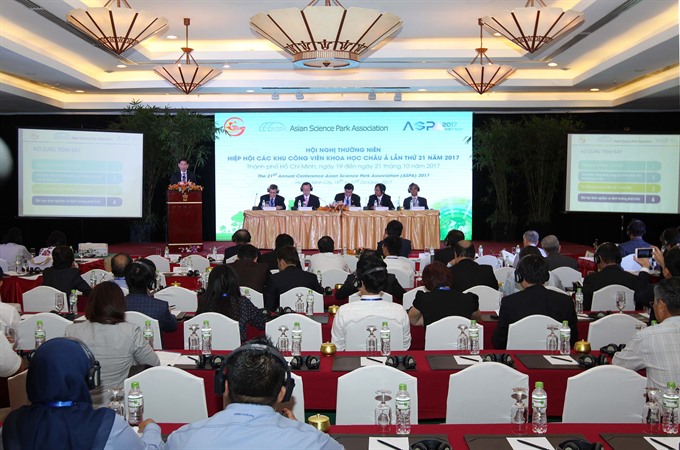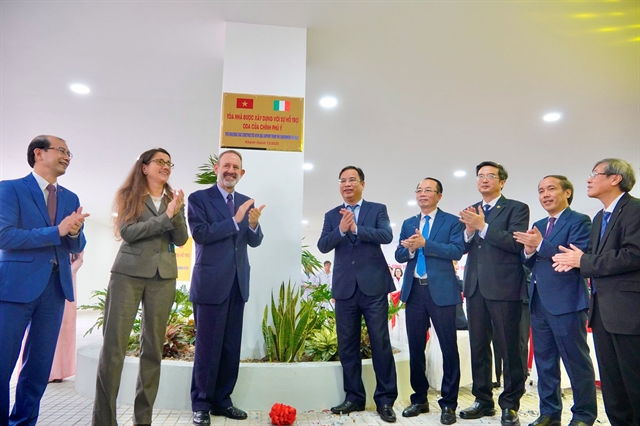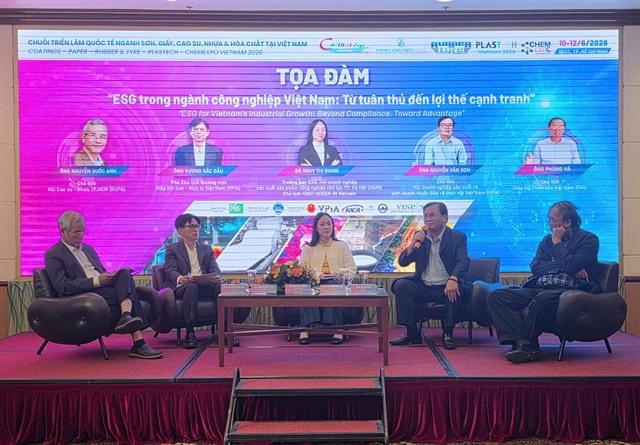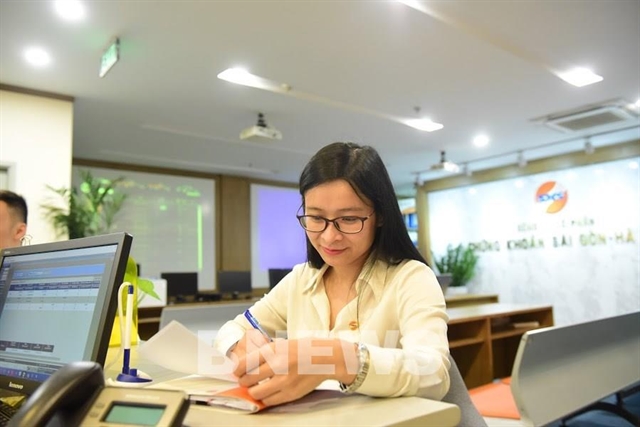 Society
Society

The 21st annual conference of the Asian Science Park Association has opened in HCM City.
 |
| The plenary session of the annual Asian Science Park Association meeting in HCM City on Friday. – VNS Photo Thanh Vũ. |
HCM City – The 21st annual conference of the Asian Science Park Association has opened in HCM City.
Speaking at the event at the Rex Hotel, Nguyễn Thành Phong, chairman of the city People’s Committee, said: “The annual ASPA meeting gathers many managers of science parks, high-tech parks, famous scientists and heads of science and technology organisations from around the world.
“It is not only a chance for science and technology parks to exchange experiences, share scientific research and understand more about HCM City, but it is also an important event for Việt Nam to promote international integration in science and technology.
“HCM City is now seeking technology solutions to build a smart city.”
The conference’s theme is “Science Parks in Empowering Growth Quality and Competitiveness of National Economy.”
Trần Vĩnh Tuyến, deputy chairman of the People’s Committee, provided a report card on the city’s performance on science and technology front.
“In 2011-15 science and technology grew at 16.9 per cent, the highest rate out of nine key services.
“The city has paid great attention to high technology and has attracted 130 projects with a total investment of US$6.8 billion. It is expected that by 2020 the tech sector will contribute 10 per cent of the city’s gross regional domestic product.”
The city is in the process of establishing a Science and Technology Park on an area of 200 hectares in District 9 at a cost of VNĐ4.3 trillion ($191 million) with a focus on green, recycling, aerospace, and IT sectors, he added.
Hirohisa Uchida, chairman of the ASPA, said: “This is a good chance for science and technology managers to exchange ideas on innovation and experiences, update each other on developments and choose the most appropriate model for each country because of the different levels of science and technology.
“Japan has no energy or mineral resources, but a lot of human resources. We faced serious pollution, like Việt Nam does now, in the 1960s-70s during a feverish period of development, but we overcame that and we would like to share our experience with Việt Nam.”
Prof David Ogden Dapice, chief economist of the Việt Nam and Myanmar Programme at the Centre for Business and Government at Harvard University’s John F. Kennedy School of Government, spoke about successful cities.
“Cities already are where most people live and four-fifths of economic output is produced. These numbers will grow over the next few decades and two-thirds of people will be urban by 2050 because they can connect better, have higher working capacity and be more effective in their work, but they have to face high crime rates, traffic congestion, flooding.”
Production must go out of cities and services should replace production, he said.
“HCM City should have good services with high value addition and a well-developed education system to serve the services sector.
“Globalisation is a move. Talented people can move to places where they get good living and working conditions. HCM City faces a lot of problems like pollution, traffic congestion and difficulty in retaining talent.”
“Developing science and technology parks is a good move but authorities need to attract venture funds to support science and technology projects.”
He urged Việt Nam to adopt new technologies, saying it would be big cities that are home to most modern technologies.
“The country should have a national policy to encourage and take advantage of modern technology in daily life.”
Prof Duck Ryul Hong from Daegu University in Korea, said: “Science parks lead regional industrial promotion and preparations for Industrial Revolution 4.0 by focusing on creating value based on regional competitiveness.”
Dr Yeong Junaq Wang, director general of Taiwan’s Hsinchu Science Park Bureau, said: “The global environment has kept changing due to external variations and globalisation, enabling easier flow of resources and talent. Science parks are thus facing the problem of brain-drain and deficiency in research and development competence.”
After the plenary session, the conference discussed five topics: Science parks in life sciences and technology development towards better quality of life; Asian science parks: opportunities for development co-operation; Venture capital for start-ups in science parks; Internet of Things in science parks: a new smart city model; and Usage of renewable energy for sustainable development and environmental protection.
There were 90 foreign participants from countries and territories including Japan, Korea, Iran, Turkey, the US, Russia, Bhutan, Taiwan, Singapore, and Malaysia.
On the sidelines of the conference, there were other association-related events like the ASPA executive board meeting to review last year’s activities and set directions for next year; ASPA vice-presidential elections; annual ASPA Awards for ASPA featured members; and the selection of the host for the next conference in 2018.
The Sài Gòn Hi-Tech Park (SHTP) is the organiser of the event.
ASPA is an international non-governmental organisation established in Japan in 1997 for the purpose of joint development in Asia of areas like science and technology, industry and the economy.
It has 148 members, including three from Việt Nam: the Sài Gòn Hi-Tech Park, Đà Nẵng Hi-Tech Park and Hòa Lạc Hi-Tech Park.
HCM City had hosted the 16th conference in 2012.
This month the SHTP celebrates its 15th anniversary, and the celebrations will be organised at its Labour Culture House on October 29. – VNS




